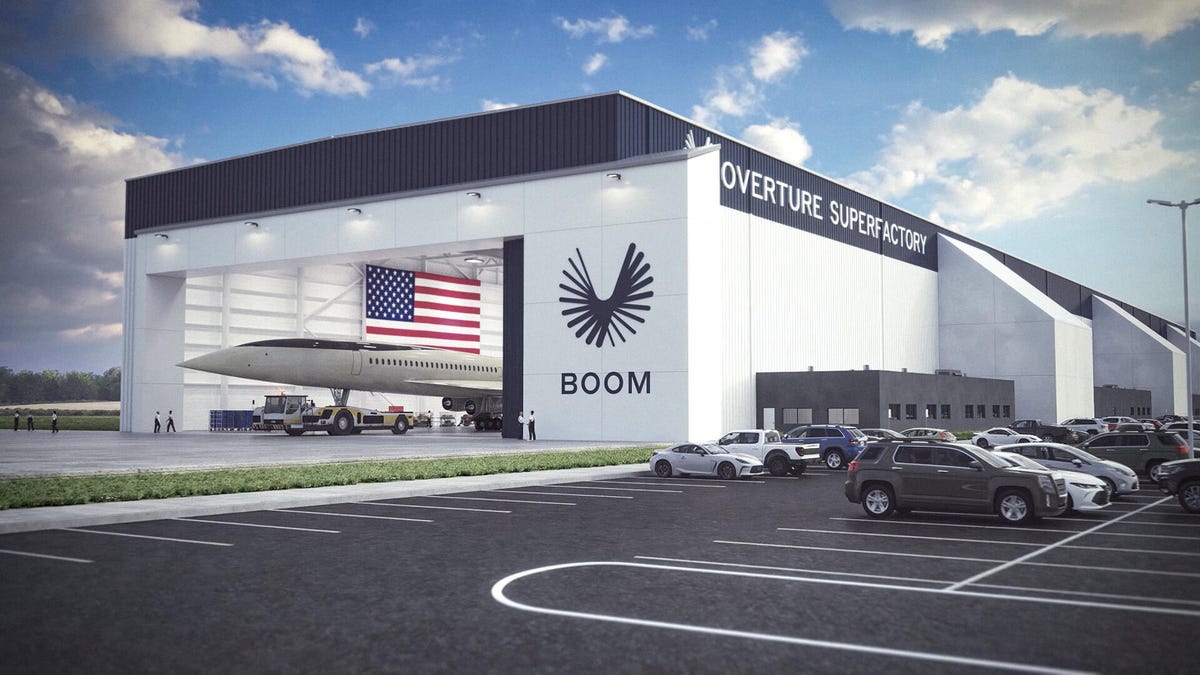Supersonic air travel could be making a comeback, thanks to the work of companies like Boom. We visited Boom’s hangar in Mojave, California, to learn about what it takes to resurrect the dream of blisteringly fast intercontinental air travel, more than 20 years after the retirement of the Concorde supersonic jetliner.
At the time of writing, Boom Supersonic’s XB-1 demonstrator aircraft has flown 11 test flights, achieving a maximum speed of Mach 0.95. Mach 1 is the speed of sound — about 767 mph at 68 degrees Fahrenheit. Boom founder and CEO Blake Scholl says it’ll go supersonic “somewhere around flight 12.”
Boom Supersonic says its XB-1 demonstrator aircraft is getting ready to break the sound barrier.
Behind the controls for these flights is Chief Test Pilot Tristan “Gepetto” Brandenburg, who tells me that from inside the aircraft, going supersonic is “actually kind of anticlimactic.” Aside from a subtle change in the feel of the controls, the only way he would even know it happened is by keeping an eye on his speed indicator.
Brandenburg shows off his view from the cockpit inside the XB-1 flight simulator.
The infamous sonic boom, after which the company and the XB-1 “Baby Boom” aircraft is named, is primarily something experienced by people outside the aircraft. To minimize disturbance to anybody living and working in Boom’s flight path, the company says it plans to fly its passenger aircraft at supersonic speeds over the ocean, and will fly at just below the speed of sound when over land. That’s still significantly faster than the cruising speed of traditional jetliners, however, which is about 550 to 600 mph.
Boom says it is also keeping an eye on NASA’s development of low-boom supersonic technology and may integrate that into future aircraft designs.
Shortly after going supersonic, Boom’s XB-1 demonstrator aircraft will be retired and the focus will shift to building the scaled-up passenger aircraft Overture.
The XB-1 flight test program is paving the way for the Overture, Boom’s passenger aircraft, which will be capable of running on both traditional aviation fuel as well as newer sustainable aviation fuel.
The company aims to carry its first passengers in about five years. It has already completed construction on a “superfactory” that will churn out 33 Overture aircraft a year to start, with plans to expand. United, American and Japan Airlines already have preorders in.
Boom completed construction of its Overture Superfactory in North Carolina in June last year.
While ticket pricing will ultimately be set by the various airlines, passengers can expect to pay a bit of a premium for the faster ride, especially “on day one, when there are more passengers than there are airplanes,” Scholl says. “But our goal is to get [prices] down over time.”
To see our full visit to Boom Supersonic, as well as my attempt to pilot the XB-1 flight simulator, check out the video in this article.
Read the full article here


